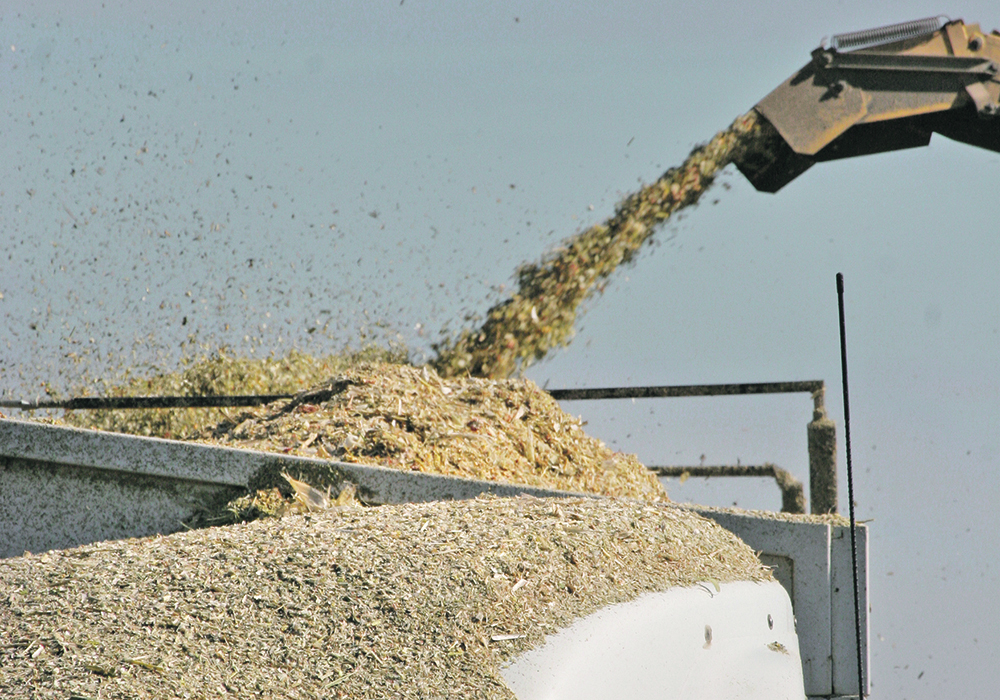Many important diseases can affect the brains of cattle, sheep and goats. One of the more common brain infections is a condition known as listeriosis.
The bacterium that causes this disease is Listeria monocytogenes, named after Joseph Lister, a prominent British surgeon who advanced the field of sterile surgery at the end of the 1800s.
This bacterium is present in a wide range of environments including soil and the feces of numerous animals. It is an important cause of food-borne illness in people, often associated with contaminated deli meat, soft cheese, unpasteurized milk and some produce.
Read Also

Saskatchewan dairy farm breeds international champion
A Saskatchewan bred cow made history at the 2025 World Dairy Expo in Madison, Wisconsin, when she was named grand champion in the five-year-old Holstein class.
Although it can spread between animals, the main source of infection in farm animals is poor quality silage. Silage that has not acidified properly (with higher pH than normal) allows the bacteria to proliferate.
When animals consume the contaminated food, the bacteria can enter the body through small cuts in the mouth. From there, it travels up a nerve in the head to the brain where it establishes an infection and triggers damaging inflammation. Infection and inflammation of the brain stem is the most common form of listeriosis in animals. Because it tracks up one nerve, it tends to also cause brain stem infections on one side only. This one-sidedness explains why the clinical signs are usually lopsided.
It takes about 10 days from when animals eat contaminated silage to when they begin to develop listeriosis. Because it is associated most often with silage feeding, cases tend to occur in the winter and spring when animals are off pasture and on supplemental feed.
Affected animals typically present with neurological signs attributed to one side of the brain stem. Animals will circle in one direction and they may lean on objects or tilt their head to one side. The eyes may spontaneously travel in a horizontal direction (nystagmus). One half the of face may be weak or paralyzed. Practically, this appears as a droop to the lip and lower eyelid, profuse drooling and impacted feed in the cheek.
As the brain infection becomes more severe, affected animals may become depressed and lie down. Seizures and death occur as the disease reaches its final stages.
Other diseases that affect the brain should be considered and ruled out, including rabies, lead poisoning, polio (thiamine deficiency) and Histophilus infection (TME).
In addition to neurological disease, listeria has a propensity to cause uterine infections. The infection can be particularly devastating in pregnant females. Listeria bacteria localize to the uterus where they can cause inflammation of the placenta and directly infect the fetus. Both of these can lead to abortion, stillbirths or death of the newborn neonatal animal.
Diagnosis in living animals is based on the clinical signs described above. For valuable animals, a veterinarian can sample the cerebral spinal fluid to aid in the diagnosis. If animals die, the disease can be confirmed with an autopsy examination. In cases of abortion, the fetus and placenta should be submitted to a diagnostic laboratory for testing.
The bacterium that causes listeriosis is usually very susceptible to antibiotic medications, but because the infection is in the brain, it can be difficult for the medication to reach the site of infection.
If the disease is caught in the earliest stages, high doses of antibiotics such as penicillin and oxytetracycline may be effective.
Supportive care such as fluids may be helpful.
The herd should be switched off that batch of silage or more cases may develop. Vaccination against listeriosis is not routine, so the best prevention is to process and store silage in such a way that the pH reaches appropriate low levels to prevent the bacterium from overgrowing.















